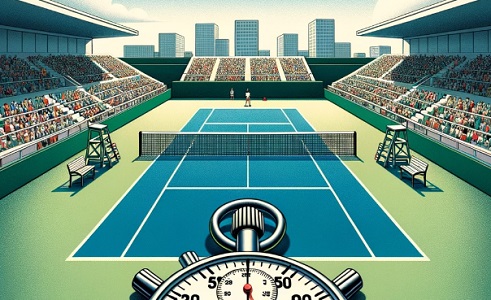Should locker room breaks in tennis be regulated?
Examining the Controversies on locker Room Breaks
The world of tennis, with its intense matches and nail-biting tiebreakers, also has its share of controversies. One such issue that has gained traction in recent years is the extended locker room breaks taken by players. Some critics argue that players, including top names like Rafael Nadal and Novak Djokovic, have, on occasions, abused this break to their advantage.
The benefits of the break
Tennis, as a sport, is a demanding test of both physical endurance and mental fortitude, especially in high-stakes environments like Grand Slam tournaments. The locker room breaks, often seen as a respite in these extended battles, serve a critical purpose. Players are pushed to their limits over potentially five-set matches, which can last several hours under varying and sometimes extreme weather conditions. During these breaks, they get an opportunity not just to refresh and rehydrate, but also to change sweat-soaked clothing, which can be uncomfortable and even lead to skin irritations or other issues. Furthermore, for those who might be experiencing the onset of cramps or minor injuries, this break provides a chance to receive essential medical attention, ensuring that the competition remains at a high standard and reduces the risk of severe injuries. These moments of pause can also be vital for mental recuperation, allowing players to regroup, strategize, and return to the court with renewed focus and determination. In essence, these breaks are not just about physical relief but are integral to the holistic well-being of a player during a match.
The criticism
While the locker room breaks in tennis are designed to offer players a necessary reprieve, they have not been without controversy. Critics argue that the absence of strict regulations around the duration and timing of these breaks has opened the door for potential misuse. Some players, they contend, exploit these breaks not out of genuine need but as a tactical ploy. By extending their time off the court, they might aim to disrupt the flow and momentum of their opponent, especially if the latter is on a winning streak or displaying superior form. This strategy, intentional or not, can be perceived as gamesmanship, casting a shadow over the spirit of fair play. The extended durations, occasionally stretching beyond the unspoken acceptable limits, can also affect the rhythm and concentration of the waiting player, giving the one taking the break an unfair advantage. Such instances have led to heated exchanges and debates both on and off the court, with many calling for clearer guidelines to prevent what they see as a loophole in the game’s conduct.
The need for regulation?
The growing concerns surrounding locker room breaks have led to a pressing discourse on the necessity for clearer regulations. As the sport of tennis has evolved, so have the strategies players employ, and when an aspect of the game, like these breaks, becomes a potential tool for tactical advantage, it’s evident that the governing bodies must intervene. A more stringent set of guidelines could ensure that all players adhere to a standard that maintains the match’s integrity and competitive spirit. By specifying the maximum duration for these breaks and perhaps even imposing penalties for any overages, the sport could diminish the chances of any perceived gamesmanship. Additionally, a regulated framework would provide clarity for both players and fans, reducing ambiguities and potential conflicts during crucial matches. However, while the call for regulation is strong, it’s essential that any new rules consider the genuine physical and mental demands tennis places on its players. Striking this balance between fair play and player welfare is paramount to ensure that tennis remains both competitive and compassionate.
Conclusion
As tennis evolves, so should its rules and regulations. While it’s crucial to ensure fair play, it’s equally vital to understand and respect the physical demands of the sport. A middle ground, with clear guidelines but also some flexibility, might be the best way forward.

